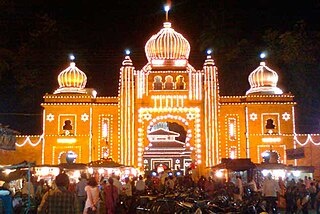
Sangli is a Metro city and the headquarters of Sangli District in Maharashtra, in western India. It has earned the nickname "Turmeric City of India" for being the hub of the Asia's largest production and trade of this spice.. Sangli is situated on the banks of river Krishna and houses many sugar factories. A significant city in Western India, it lies 376 km from Mumbai, 230 km from Pune and 638 km from Bangalore.The city has a significant healthcare hub, including its twin City Miraj. Sangli-Miraj combined has more than 1000+ Hospitals and Clinics. Sangli is known as Turmeric city for its global turmeric trade as well grapes, raisins, jaggery and the most significant number of sugar factories in India. The only district has more than 30 sugar factories.The Tasgaon-Sangli region boasts the largest raisin market in Asia. Sangli UA/Metropolitan is one of the biggest cities in Maharashtra and the 93rd biggest in India.Sangli Miraj Kupwad, along with its Urban Agglomeration, together known as Sangli Miraj Kupwad Metropolitan Region (SMKMR).
Sangli UA/Metropolitan Region has developed itself as a modern city with broader roads, major railway junctions, Malls & Multiplexes, hotels with multi-cuisine and excellent education facilities. The city has a significant healthcare hub, including its twin City Miraj. Sangli-Miraj combined has more than 1000+ Hospitals and Clinics, making it one of India's largest emerging medical hubs and an emerging international hub for patients from Oman, Sweden, Canada, Yemen, and Kuwait. It is also a significant city with telecommunication and entertainment facilities. A Software Technology Park is being set up in a prime location in the city. Nearby towns like Ichalkaranji Tasgaon Ashta Kavathe-Mahankal Palus Shirol and Jaysingpur are now emerging as Satellite cities to Sangli UA/Metropolitan Area. Sangli has the largest sugar factory in Asia and most number of sugar factories in India as well. Krishna Valley Wine Park is another leading wine park in India. Sangli is the world's leading Global hub for Turmeric Trade. Sangli is also known as the Chess City of India. Now, Sangli City is emerging as the yellow city of India.Sangli city have great political influence in Maharashtra.
Marathi literature is the body of literature of Marathi, an Indo-Aryan language spoken mainly in the Indian state of Maharashtra and written in the Devanagari and Modi script.

Narayan Shripad Rajhans, popularly known as Bal Gandharva, was a famous Marathi singer and stage actor. He was known for his roles as female characters in Marathi plays, since women were not allowed to act on stage during his time.

Lavani is a genre of music popular in Maharashtra, India. Lavani is a combination of traditional song and dance, which particularly performed to the beats of Dholki, a percussion instrument. Lavani is noted for its powerful rhythm. Lavani has contributed substantially to the development of Marathi folk theatre. In Maharashtra and southern Madhya Pradesh it is performed by the female performers wearing nine-yard long sarees. The songs are sung in a quick tempo.
Bhāsa is one of the earliest Indian playwrights in Sanskrit, predating Kālidasa. Estimates of his floruit range from the 4th century BCE to the 4th century CE; the thirteen plays attributed to him are commonly dated closer to the first or second century CE.
Tamasha is a traditional form of Marathi theatre, often with singing and dancing, widely performed by local or travelling theatre groups within the state of Maharashtra, India. It has also been the subject of several Marathi films. Some Hindi movies have also included Tamasha-themed songs, known as Lavanis, in the past.

Vishnudas Bhave and was the leading dramatist of Maharashtra, India and considered as pioneer of Marathi theatre. He was born in Sangli and he staged the first Marathi-language play Sita Swayamvar in Sangli in 1843. In this venture, Bhave was supported by the then king of the princely state of Sangli. After the success of the play Sita Swayamvar, Bhave staged plays on various other episodes of the Ramayana. He traveled with his troupes for the plays. He also ventured into puppet shows. Bhave died on 9 August 1901.
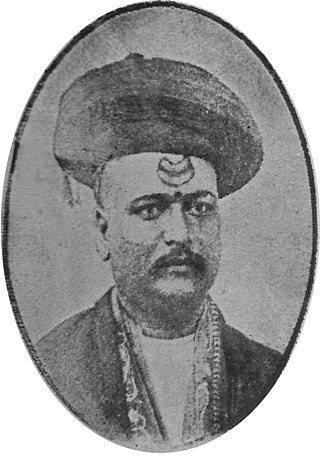
Balwant Pandurang Kirloskar, popularly known as Annasaheb Kirloskar, was a Marathi playwright from the Bombay Presidency in British India.
Govind Ballal Deval (1855–1916) was a Marathi playwright from Bombay Presidency, British India.

Satish Vasant Alekar is a Marathi playwright, actor, and theatre director. A founder member of the Theatre Academy of Pune, and most known for his plays Mahanirvan (1974), Mahapoor (1975), Atirekee (1990), Pidhijat (2003), Mickey ani Memsahib (1973), and Begum Barve (1979), all of which he also directed for the Academy. Along with Mahesh Elkunchwar and Vijay Tendulkar he is considered among the most influential and progressive playwrights in modern Marathi and Indian theatre.
Krushnaji Prabhakar Khadilkar was a Marathi writer from Bombay Presidency, British IndiaIndia. George calls him "a prominent lieutenant of Lokmanya Tilak". He was editor of Kesari, Lokmanya and Navakal. The subject of navakal is political, trade and market price Khadilkar in the beginning of his career wrote prose-plays, but achieved "even greater recognition" with plays like Svayamvara – which had songs which were based on Indian classical music. The notability of his dramatic technique, in his fifteen plays, was to "endow ancient Hindu legends and tales with contemporary political significance". The Encyclopaedia of Indian Literature, remarks that while Annasaheb Kirloskar "laid the foundation of popular sangit natak", it saw its great rise and gradual decline with the advent of Khadilkar. It considers Khadilkar along with Bal Gandharva as "the architect of what later on came to be called the golden age of the Marathi drama".

Sangeet Natak in Marathi language literally means Musical Drama. As the name suggests, this form of drama combines prose as well as poetry in form of songs to convey the story. In a manner, they are very much similar to Musicals. Sangeet Natakas played a vital role in the development of Marathi theater and thus the Marathi cinema as well as Indian film industry. Sangeet Natak start with praise of Lord Natraja which is called as Naandi or Mangalaacharan or Suchakpad usually the famous one "Panchatunda Nararundamaldhar" from Sangeet Shakuntal. They are popular for use of Indian classical music. The "Dramatic Music" is called Natya Sangeet, one of the two popular forms of vocal arts in Maharashtra and surrounding states. The other is Bhavageet.
Ramchandra Purushottam Marathe, also known as Pandit Ram Marathe, was a Marathi music director, singer, and actor on stage and in films. As a child actor, he performed the title role of Krishna in Prabhat Film Company's 1938 film, Gopal Krishna. He was disciple of Vilayat Hussain Khan, the maestro of Agra gharana of Hindustani classical music., Master Krishnarao Phulambrikar and others. Through Master krishnarao, he developed his Khayal style which had elements of different gharanas such as Jaipur, Gwalior and Agra.
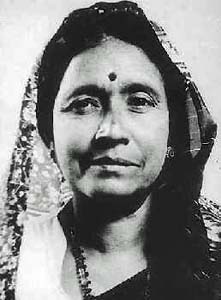
Vithabai Bhau Mang Narayangaonkar was an Indian dancer, singer and Tamasha artist.
Kavathe is a village located in Shirur Taluka of the Pune district of Maharashtra state. The village adds the name of local hindu goddess 'Yemai' for distinguishing from other villages in Maharashtra with similar name. Kavathe is known for it historical link with Maratha Empire and because of various folk art & artiste associated with Tamasha, drama, Jagaran-Gondhal and Bharud. Poet Bashir Momin Kavathekar and Dholak performer Shri Gangaram Bua are the two prominent folk artiste who had brought laurels with their notable contribution to the Maharashtra's performing art, culture and traditional art form Tamasha. Vithabai Bhau Mang Narayangaonkar's grandfather Shri Narayan Khude who formed his own Tamasha Troupe was also from Kavathe Yamai.
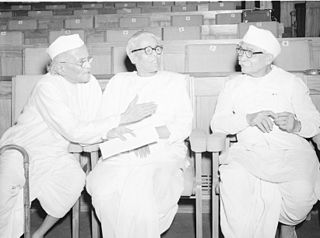
Chintaman Ganesh Kolhatkar, also known as Chintamanrao Kolhatkar, was a well known Marathi stage actor, director, producer, and playwright.
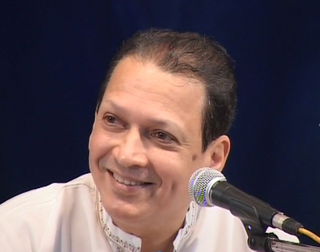
Vidyadhar Oke is an Indian doctor, musicologist, harmonium player, and astrology consultant, who has done research in the use of shrutis (microtones) in Indian classical music and created a unique 22-shruti version of the harmonium.
Ramdas Shantaram Kamat was an Indian musician. He worked in Sangeet Natak, Marathi theatre.

Bashir Kamruddin Momin, popularly known by his pen name, Momin Kavathekar, also known as 'Lokshahir B. K. Momin Kavathekar', was a popular Marathi language poet and writer who promoted sanitation, literacy, and social reforms through his literatures. His work involved raising public awareness to tackle issues like dowry system, female foeticide, alcohol addiction and blind following of superstitions.Many of his devotional songs adore the Hindu God & Goddess. He was closely associated with Maharashtra's traditional form of theatre Tamasha for almost 50 years; supporting the various Tamasha troupes by providing them with folk songs like 'Lavani', 'Gan Gavalan', 'Bhedic' and short plays called 'Vaga-Natya'.For his contribution to the field of folk art, literature and culture, he was awarded the 'Vithabai Narayangavkar Jeevan Gaurav Puraskar' by the Government of Maharashtra in 2018.












